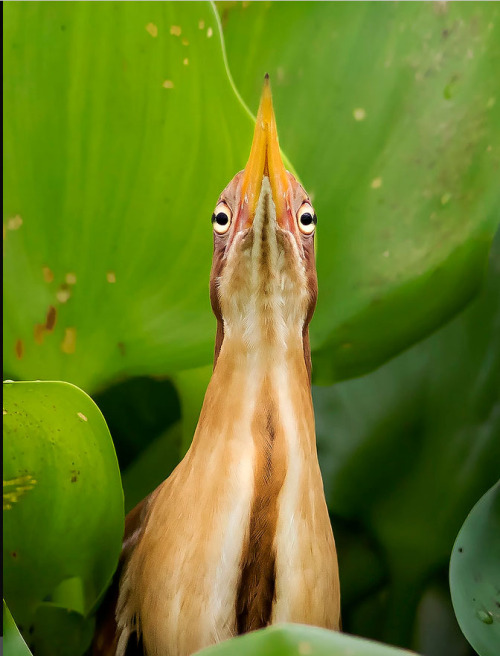A Colorful Quadrantid Meteor : Meteors Can Be Colorful. While The Human Eye Usually Cannot Discern Many

A Colorful Quadrantid Meteor : Meteors can be colorful. While the human eye usually cannot discern many colors, cameras often can. Pictured is a Quadrantids meteor captured by camera over Missouri, USA, early this month that was not only impressively bright, but colorful. The radiant grit, likely cast off by asteroid 2003 EH1, blazed a path across Earth’s atmosphere. Colors in meteors usually originate from ionized elements released as the meteor disintegrates, with blue-green typically originating from magnesium, calcium radiating violet, and nickel glowing green. Red, however, typically originates from energized nitrogen and oxygen in the Earth’s atmosphere. This bright meteoric fireball was gone in a flash – less than a second – but it left a wind-blown ionization trail that remained visible for several minutes. via NASA
More Posts from Eggxecutive-dysfunction and Others

Gray Catbird (Dumetella carolinensis)
© Kyle Jones








IT’S A BITTERN APPRECIATION POST
Sources & Species in order below!
Fun with Bittern by Richard Pittam - Eurasian Bittern (Botaurus stellaris)
Face to face with a juvenile Least Bittern by ChristinaAnne.M - Least Bittern (Ixobrychus exilis)
American Bittern by Flora to Fauna - American Bittern (Botaurus lentiginosus)
Cinnamon bittern by Shafaet Alam Abir - Cinnamon Bittern (Ixobrychus cinnamomeus)
Heads or Tails? by Peter Brannon - Least Bittern (Ixobrychus exilis)
American Bittern juvenile by Michael W Potter - American Bittern (Botaurus lentiginosus)
American bittern a bit threatened by white egret by Pamela Viale - American Bittern (Botaurus lentiginosus)
a gryphon that’s half pelican, half skunk, known as the Smellican
So fun

marshmallow has the thots
about FINSH FLYDAY!!!

Earth During a Total Solar Eclipse : What does the Earth look like during a total solar eclipse? It appears dark in the region where people see the eclipse, because that’s where the shadow of the Moon falls. The shadow spot rapidly shoots across the Earth at nearly 2,000 kilometers per hour, darkening locations in its path – typically for only a few minutes – before moving on. The featured video shows the Earth during the total solar eclipse earlier this month. The time-lapse sequence, taken from a geostationary satellite, starts with the Earth below showing night but the sun soon rises at the lower right. Clouds shift as day breaks over the blue planet. Suddenly the circular shadow of the Moon appears on the left and moves rapidly across South America, disappearing on the lower right. The video ends as nightfall begins again. The next total solar eclipse will occur next December – but be visible only from parts of Antarctica. via NASA

speaking of my highly specific 1970s cultural knowledge. people really liked this post on twitter
-
 cyarsk5230 reblogged this · 2 years ago
cyarsk5230 reblogged this · 2 years ago -
 90363462 reblogged this · 2 years ago
90363462 reblogged this · 2 years ago -
 gesehen-sein liked this · 2 years ago
gesehen-sein liked this · 2 years ago -
 aanxii reblogged this · 2 years ago
aanxii reblogged this · 2 years ago -
 jelly-shark reblogged this · 3 years ago
jelly-shark reblogged this · 3 years ago -
 fluorescentvenus liked this · 3 years ago
fluorescentvenus liked this · 3 years ago -
 werewoofs liked this · 3 years ago
werewoofs liked this · 3 years ago -
 saltythexfilesindianjonescop liked this · 3 years ago
saltythexfilesindianjonescop liked this · 3 years ago -
 cinemaglow liked this · 3 years ago
cinemaglow liked this · 3 years ago -
 david-watts reblogged this · 3 years ago
david-watts reblogged this · 3 years ago -
 delic4t3 liked this · 3 years ago
delic4t3 liked this · 3 years ago -
 babbling-musings reblogged this · 3 years ago
babbling-musings reblogged this · 3 years ago -
 drowsinginspace reblogged this · 3 years ago
drowsinginspace reblogged this · 3 years ago -
 plac-grocka reblogged this · 3 years ago
plac-grocka reblogged this · 3 years ago -
 aeyriabird reblogged this · 3 years ago
aeyriabird reblogged this · 3 years ago -
 sylvanthorn liked this · 3 years ago
sylvanthorn liked this · 3 years ago -
 onthebirdroads reblogged this · 3 years ago
onthebirdroads reblogged this · 3 years ago -
 tv-idea-writer liked this · 3 years ago
tv-idea-writer liked this · 3 years ago -
 lijinbao reblogged this · 3 years ago
lijinbao reblogged this · 3 years ago -
 sanaasblog liked this · 3 years ago
sanaasblog liked this · 3 years ago -
 thisheavenlyboy liked this · 3 years ago
thisheavenlyboy liked this · 3 years ago -
 koikyokusei reblogged this · 3 years ago
koikyokusei reblogged this · 3 years ago -
 zonagirlinedmonton liked this · 3 years ago
zonagirlinedmonton liked this · 3 years ago -
 tonraqd reblogged this · 3 years ago
tonraqd reblogged this · 3 years ago -
 phantomfire213 reblogged this · 3 years ago
phantomfire213 reblogged this · 3 years ago -
 princealiguap liked this · 3 years ago
princealiguap liked this · 3 years ago -
 maryellencarter liked this · 3 years ago
maryellencarter liked this · 3 years ago -
 keeponmovingss liked this · 3 years ago
keeponmovingss liked this · 3 years ago -
 malaxis liked this · 3 years ago
malaxis liked this · 3 years ago -
 manyblinkinglights liked this · 3 years ago
manyblinkinglights liked this · 3 years ago -
 perniciouslizard reblogged this · 3 years ago
perniciouslizard reblogged this · 3 years ago -
 ocean-9 reblogged this · 3 years ago
ocean-9 reblogged this · 3 years ago -
 jjarichardson reblogged this · 3 years ago
jjarichardson reblogged this · 3 years ago -
 jjarichardson liked this · 3 years ago
jjarichardson liked this · 3 years ago




